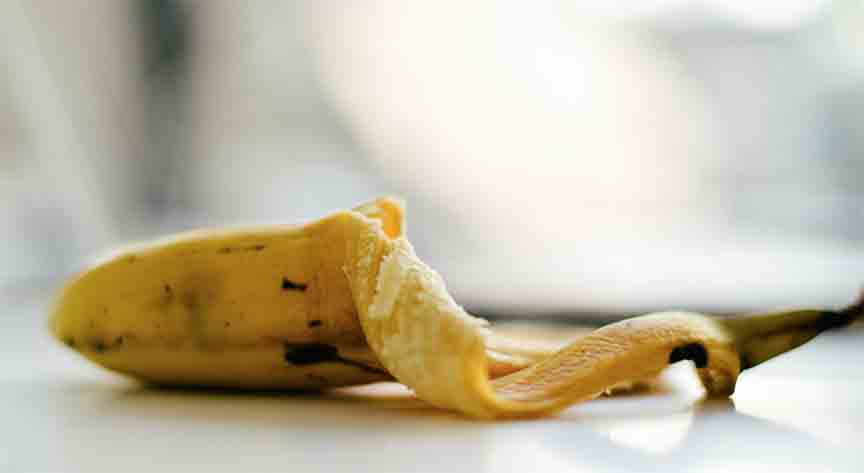
Why We Eat Too Much at Night
July 30, 2018
Summer Peach and Balsamic Pizza
July 30, 2018When it comes to improving your fitness, nutrition and health, we’ve chosen a dozen of the simplest ways to eat better, perform better and boost your entire well-being.
1. Going to the gym without eating first?
Here’s a new incentive: Eat protein before you go and you can peel off 15 pounds a year. A study published in the Journal of Science and Medicine in Sport showed that women who ate a high-protein meal an hour before their workout burned more calories per minute than women who ate a low-protein meal or no food. The additional calorie burn amounted to 185 calories over the following 24 hours and could add up to a 15-pound loss within a year.
2. Toss green tomatoes into your salads.
Green tomatoes contain tomatidine, a compound that stimulates muscle growth. Research shows it produces increased strength and endurance, and it prevents muscle loss as it reduces body fat. The adage eat the colors of the rainbow has never been more apt (especially during the holidays!).
3. HIIT it!
Trade in your long, slow cardio for a few high-intensity sessions a couple of times a week for more effective fat loss. High-intensity aerobic training is more effective at reducing belly fat and overall body fat than any other type of exercise. Women who cycled (on stationary bicycles) three times a week for 20 minutes, doing workouts consisting of eight-second sprints followed by 12 seconds of low-intensity work, lost more fat (2.5 kilograms) than women who cycled for 40 minutes at a steady state.
4. Spice up meals.
Add red pepper to meals to kick up fat burning. Capsaicin, which gives hot peppers their zing, can cause a small, temporary increase in metabolism, says Amy Goodson, RD, CSCS, a board-certified specialist in sports dietetics and co-author of Swim, Bike, Run — Eat (Fair Winds Press, 2014). “Keep in mind it would take quite a bit of spice to have any major effect on weight, but every little bit helps!”
5. Focus on muscle strength.
As women tend to have more ACL injuries than men — three times in fact — it’s crucial to keep the muscles around the knee strong. Most ACL injuries occur in activities with sudden deceleration, jumping and uncontrolled landings like in skiing, soccer and basketball. That’s when hamstring strength becomes key. Though not conclusive, researchers suspect women’s “Q angle,” where the femur and tibia meet (larger than men’s), may create extra torque on the knee.
6. Eat smart to recover.
It’s also important to continue eating a balanced diet to help your body heal. “The body needs a lot more calories to function daily than to exercise,” says Nancy Clark, MS, RD, CSSD, a board-certified specialist in sports dietetics. “During injury, women need to trust their bodies, which can intuitively adjust calorie need — they just need to listen.” She explains that we need about 10 calories for every pound of bodyweight to function. So a 140-pound woman needs 1,400 calories per day just to live healthy.
Clark recommends eating adequate protein to live healthy and heal when injured. She suggests that a 140-pound woman get 70 to 90 grams of protein per day in small, equal increments. “I tell clients to think of daily eating in four buckets — breakfast, early lunch, late lunch and dinner, and in each of those buckets goes about 20 grams of protein,” she says.
Good sources of protein include Greek yogurt (calcium bonus), salmon (fish oil fights inflammation), hummus, lean meat, chicken and tofu. She points out that a container of tofu is only equal to one chicken breast, which is a lot of tofu. Clark suggests adding cheese to kick up protein and using turmeric, ginger, cocoa, garlic and green tea for their natural anti-inflammatory compounds, while vitamin C (in citrus, kale and red bell peppers) and zinc (in seafood, beef and nuts) are also helpful healers.
7. Don’t drastically diet.
Lean people (versus those who are overweight or obese) who diet are more likely to experience a rebound or “fat overshooting” effect that leaves them heavier than when they started. Small, potentially permanent, lifestyle changes such as cutting out high-calorie condiments and making small increases in activity are more likely to lead to lasting weight loss.
8. Go organic.
The extra cost of organic fruits and veggies may be worth it, especially if you’re trying to lose weight. Called “obesogens,” 15 to 20 chemicals found in pesticides have been found to cause weight gain. At the very least, avoid produce highest in pesticides, such as apples, strawberries, grapes, celery, peaches, spinach, sweet bell peppers, imported nectarines, cucumbers, cherry tomatoes, imported snap peas, potatoes, hot peppers and kale. For more, see Is Organic Protein Better?
9. Listen to your body.
Most of us turn a deaf ear to our bodies, even when they are screaming for a break. Overtraining is a common occurrence among fitness die-hards, and in the long run, it kills progress and promotes injures. If you’re experiencing a number of these overtraining symptoms, it’s time to throw in the gym towel. Add another full rest day to your program and scale back on your intensity and/or volume for several weeks to get back on track.
Signs of overtraining:
- Lethargy and sluggishness
- Severe muscle soreness lasting more than two days
- Trouble sleeping
- Low-energy five to 10 minutes into a workout
- Elevated resting heart rate
- Mood swings/depression
- Irritability and low self-esteem
- Decreased strength
- Persistent illness
10. Get adequate rest during workouts.
There’s nothing wrong with keeping your heart rate elevated to maximize calorie burn. But hardworking muscles need regular breaks within the workout itself to replenish themselves with oxygen, blood and blood sugars. How long you rest depends on your goals. For strength training, use this chart to gauge your rest time:
| Goal | Rest Between Sets |
| Fat burning | 30 seconds |
| Hypertrophy | 60 seconds |
| Power | 390 seconds to 3 minutes |
When doing supersets or circuits, go through the required number of moves, then rest 60 to 90 seconds between rounds. For HIIT cardio, work at a 1:2 or 1:3 ratio of work-to-recovery, i.e., for every 20 seconds of sprinting, recover 60 to 90 seconds.
11. Stay involved even when sidelined.
And stay connected to friends and family. Having a strong social support system and positive outlook during rehab can enhance healing results, according to an article published in the National Athletic Trainers’ Association Journal of Athletic Training.
12. Drink more water.
You can’t burn fat and calories without adequate fluid, says Michele Olson, Ph.D., professor of exercise science at Auburn University, Montgomery, in Alabama. “It sounds too simple, but it’s extremely important.” A poor workout, either from lack of endurance or an inability to work out intensely, is often because of being under-hydrated, Olson says.


